| Listing 1 - 10 of 19 | << page >> |
Sort by
|
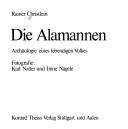
ISBN: 3806201900 9783806201901 Year: 1978 Publisher: Stuttgart: Theiss,
Abstract | Keywords | Export | Availability | Bookmark
 Loading...
Loading...Choose an application
- Reference Manager
- EndNote
- RefWorks (Direct export to RefWorks)
Alemanni (Germanic people) --- Germanic antiquities --- History --- -Germanic antiquities --- Germanic peoples --- Antiquities --- Alamani (Germanic people) --- Alamanni (Germanic people) --- Alemanni --- Ethnology --- Germanic antiquities. --- History. --- Alemanni (Germanic people) - History
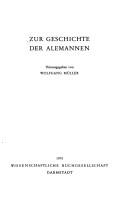
ISBN: 3534034570 9783534034574 Year: 1975 Volume: 100 Publisher: Darmstadt: Wissenschaftliche Buchgesellschaft,
Abstract | Keywords | Export | Availability | Bookmark
 Loading...
Loading...Choose an application
- Reference Manager
- EndNote
- RefWorks (Direct export to RefWorks)
Alemanni (Germanic people) --- History --- -Alamani (Germanic people) --- Alamanni (Germanic people) --- Alemanni --- Ethnology --- Germanic peoples --- -History --- Alamani (Germanic people) --- Alemanni (Germanic people) - History
Book
ISBN: 3806202311 Year: 1979 Publisher: Stuttgart : K. Theiss,
Abstract | Keywords | Export | Availability | Bookmark
 Loading...
Loading...Choose an application
- Reference Manager
- EndNote
- RefWorks (Direct export to RefWorks)
Alemanni (Germanic people) --- Germanic antiquities --- Alamans --- Antiquités germaniques --- History --- Histoire --- -Germanic antiquities --- Germanic peoples --- Antiquities --- Alamani (Germanic people) --- Alamanni (Germanic people) --- Alemanni --- Ethnology

ISBN: 3110167883 1306274923 3110809435 3111880982 Year: 2000 Volume: 23 Publisher: Berlin New York Walter de Gruyter
Abstract | Keywords | Export | Availability | Bookmark
 Loading...
Loading...Choose an application
- Reference Manager
- EndNote
- RefWorks (Direct export to RefWorks)
History of civilization --- Ethnology. Cultural anthropology --- Excavations (Archaeology) --- Alemanni (Germanic people) --- Franks --- Fouilles (Archéologie) --- Alamans --- Francs --- Germany --- Allemagne --- Antiquities --- Antiquités --- Fouilles (Archéologie) --- Antiquités --- Franks. --- Antiquities. --- Ethnology --- Germanic peoples --- Alamani (Germanic people) --- Alamanni (Germanic people) --- Alemanni
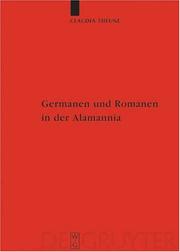
ISBN: 3110178664 3110908190 Year: 2004 Volume: 45 Publisher: Berlin New York Walter de Gruyter
Abstract | Keywords | Export | Availability | Bookmark
 Loading...
Loading...Choose an application
- Reference Manager
- EndNote
- RefWorks (Direct export to RefWorks)
For many years, 260AD was seen as the dividing line between a Romanesque classical age and a Germanic early medieval period. Now, however, it is necessary to take more account of the manifold and mutual cross-influences between the various population groups and analyse forms of continuity and discontinuity, acculturation and persistence. An examination of archaeological sources in Alamannia shows the existence of Romanesque structures up to around the year 400. The "Reihengräberfelder" (burial gounds with the graves laid out in rows) dating from the mid-5th century can be seen as marking a new beginning. Various links to the Germanic Elbe region and the Danube area show the heterogenity of the population at the beginning of this era. As late as the 6th and 7th centuries, however, different forms of burial can be found in areas close to the Rhine and in the Danube region, which demonstrate the manifold cross-influences. Lange Zeit galt das Jahr 260 als Scheidepunkt zwischen der römisch geprägten Antike und dem germanisch geprägten Frühmittelalter. Heute müssen vielfältige und wechselseitige Beeinflussungen der verschiedenen Bevölkerungsgruppen stärker in Betracht gezogen und Formen der Kontinuität und Diskontinuität, Akkulturation und Persistenz analysiert werden. Die Untersuchung der archäologischen Quellen in der Alamannia zeigt, dass in bestimmten Regionen noch bis in die Zeit um 400 romanische Strukturen feststellbar sind. Die in der Mitte des 5. Jhs. einsetzenden Reihengräberfelder sind als Neubeginn aufzufassen. Unterschiedliche Bezüge zum elbgermanischen oder donauländischen Raum zeigen die Heterogenität der Bevölkerung gerade zu Beginn der Belegung. Aber auch im 6. und 7. Jh. sind etwa in den rheinnahen Gebieten oder im Donauraum unterschiedliche Bestattungssitten zu konstatieren, die vielschichtige Beeinflussungen deutlich machen.
Roman history --- History of Germany and Austria --- anno 500-799 --- anno 300-399 --- anno 200-299 --- Romans --- Alemanni (Germanic people) --- Germany --- Antiquities. --- Antiquities, Roman. --- Alamani (Germanic people) --- Alamanni (Germanic people) --- Alemanni --- Ethnology --- Germanic peoples
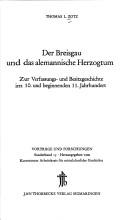
ISBN: 3799566759 9783799566759 Year: 1974 Volume: 15 Publisher: Sigmaringen: Thorbecke,
Abstract | Keywords | Export | Availability | Bookmark
 Loading...
Loading...Choose an application
- Reference Manager
- EndNote
- RefWorks (Direct export to RefWorks)
Alemanni (Germanic people) --- History --- Breisgau (Germany) --- Swabia (Germany) --- -Alamani (Germanic people) --- Alamanni (Germanic people) --- Alemanni --- Ethnology --- Germanic peoples --- -Breisgau (Germany) --- -Swabia (Germany) --- -History --- Alamani (Germanic people) --- History. --- Alemanni (Germanic people) - History - To 1500 --- Breisgau (Germany) - History --- Swabia (Germany) - History
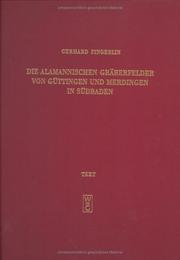
ISBN: 3110022354 9783110022353 Year: 1971 Volume: 12 Publisher: Berlin: de Gruyter,
Abstract | Keywords | Export | Availability | Bookmark
 Loading...
Loading...Choose an application
- Reference Manager
- EndNote
- RefWorks (Direct export to RefWorks)
Alemanni (Germanic people) --- Güttingen, Ger --- Merdingen (Germany) --- Antiquities --- Guttingen, Ger --- -Antiquities --- Güttingen, Ger. --- Antiquities. --- Alemanni (Germanic people). --- Alamani (Germanic people) --- Alamanni (Germanic people) --- Alemanni --- Ethnology --- Germanic peoples --- Güttingen, Ger. --- Merdingen, Ger. --- Güttingen, Ger - Antiquities --- Merdingen (Germany) - Antiquities
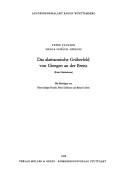
ISBN: 3875320727 9783875320725 Year: 1978 Publisher: Stuttgart Müller und Gräff
Abstract | Keywords | Export | Availability | Bookmark
 Loading...
Loading...Choose an application
- Reference Manager
- EndNote
- RefWorks (Direct export to RefWorks)
Alemanni (Germanic people) --- Alemanni (Germanic people). --- Antiquities. --- Gräberfeld. --- Giengen an der Brenz (Germany) --- Germany --- Alemannen. --- Giengen (Brenz) --- Giengen (Brenz). --- Alamani (Germanic people) --- Alamanni (Germanic people) --- Alemanni --- Ethnology --- Germanic peoples --- Giengen, Ger. --- Giengen (Germany)
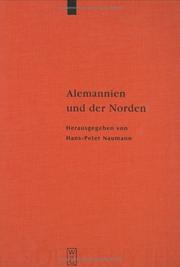
ISBN: 3110178915 3110910195 Year: 2004 Volume: 43 Publisher: Berlin New York Walter de Gruyter
Abstract | Keywords | Export | Availability | Bookmark
 Loading...
Loading...Choose an application
- Reference Manager
- EndNote
- RefWorks (Direct export to RefWorks)
Die sprachlich-kulturellen Beziehungen zwischen Nordgermanen und Alemannen sind ein traditionsreiches und kontrovers diskutiertes Forschungsfeld. Dieser interdisziplinär orientierte Sammelband berücksichtigt linguistische und namenkundliche Aspekte ebenso wie archäologische und runologische Gesichtspunkte. Es ergeben sich neue Perspektiven für den wissenschaftlichen Diskurs der Sprachgeschichtsforschung und auch der Altertumswissenschaft. The linguistic and cultural relations between the North Germanic and the Alemannic tribes are a controversial area of research with a long tradition. This interdisciplinary collection of papers takes account of both linguistic and onomasiological aspects and archaeological and runic viewpoints. New perspectives result for the academic discourse in historical linguistic research and in ancient studies.
Germanic languages --- Historical linguistics --- History as a science --- Germanic antiquities --- Congresses --- Germanic peoples --- History --- Alemanni (Germanic people) --- Inscriptions [Runic ] --- Inscriptions, Runic --- Alamani (Germanic people) --- Alamanni (Germanic people) --- Alemanni --- Ethnology --- Teutonic languages --- Indo-European languages --- Germanic tribes --- Indo-Europeans --- Teutonic race --- Antiquities --- Runic inscriptions --- Inscriptions, Norse --- Runes
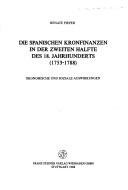
ISBN: 3515034188 Year: 1983 Volume: 73 Publisher: Wiesbaden Steiner
Abstract | Keywords | Export | Availability | Bookmark
 Loading...
Loading...Choose an application
- Reference Manager
- EndNote
- RefWorks (Direct export to RefWorks)
Alamannen (Germaans volk) --- Alamans (Peuple germanique) --- Alemanni (Germanic people) --- Bajuvaren --- Bajuwarii --- Bavarois --- -Bajuwarii (Germanic people) --- -Baioarii (Germanic people) --- Bajuwaren (Germanic people) --- Ethnology --- Germanic peoples --- Alamani (Germanic people) --- Alamanni (Germanic people) --- Alemanni --- History --- Germany --- Germany, Southern --- -South Germany --- Southern Germany --- -History --- Bajuwarii (Germanic people) --- History. --- Baioarii (Germanic people) --- South Germany --- To 843
| Listing 1 - 10 of 19 | << page >> |
Sort by
|

 Search
Search Feedback
Feedback About UniCat
About UniCat  Help
Help News
News